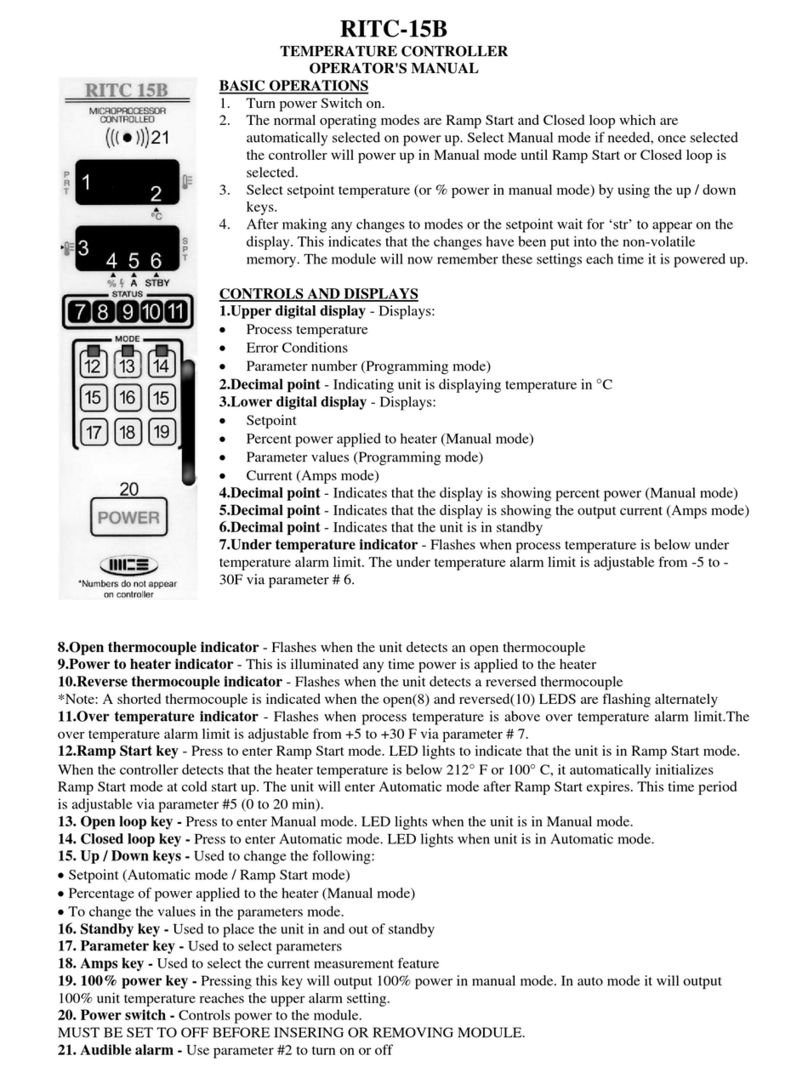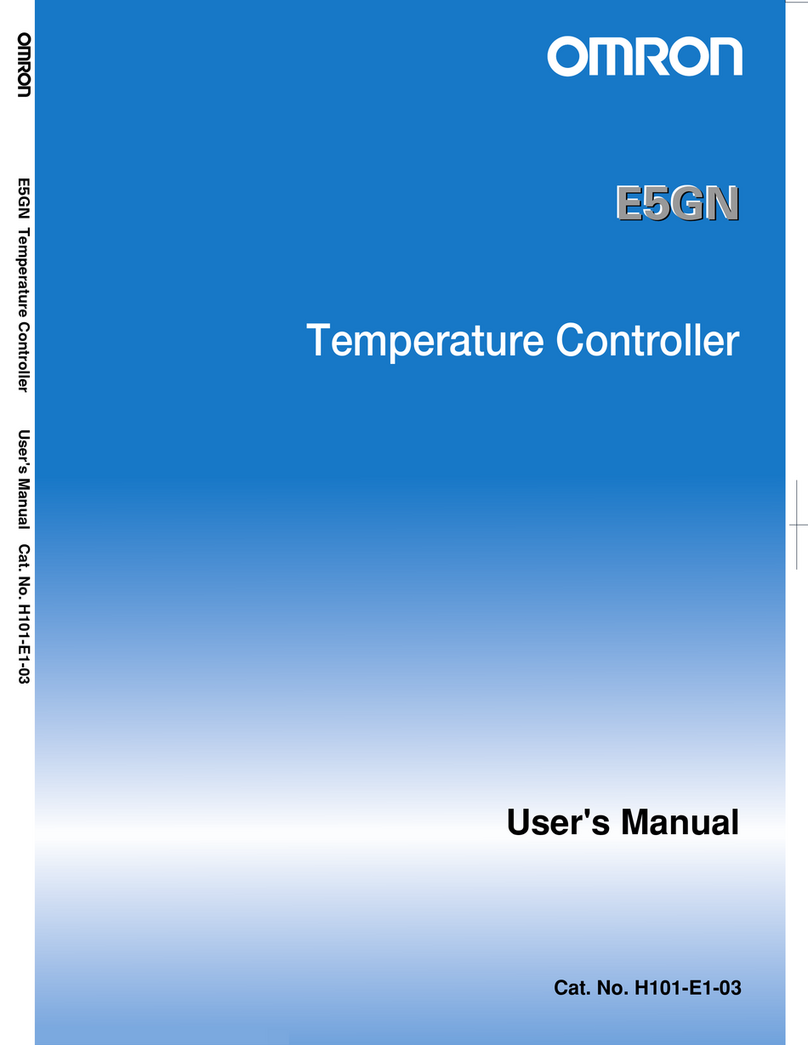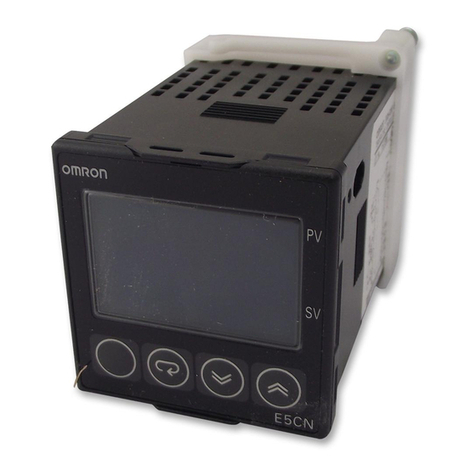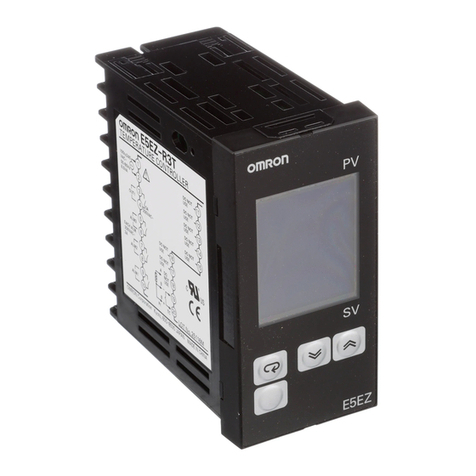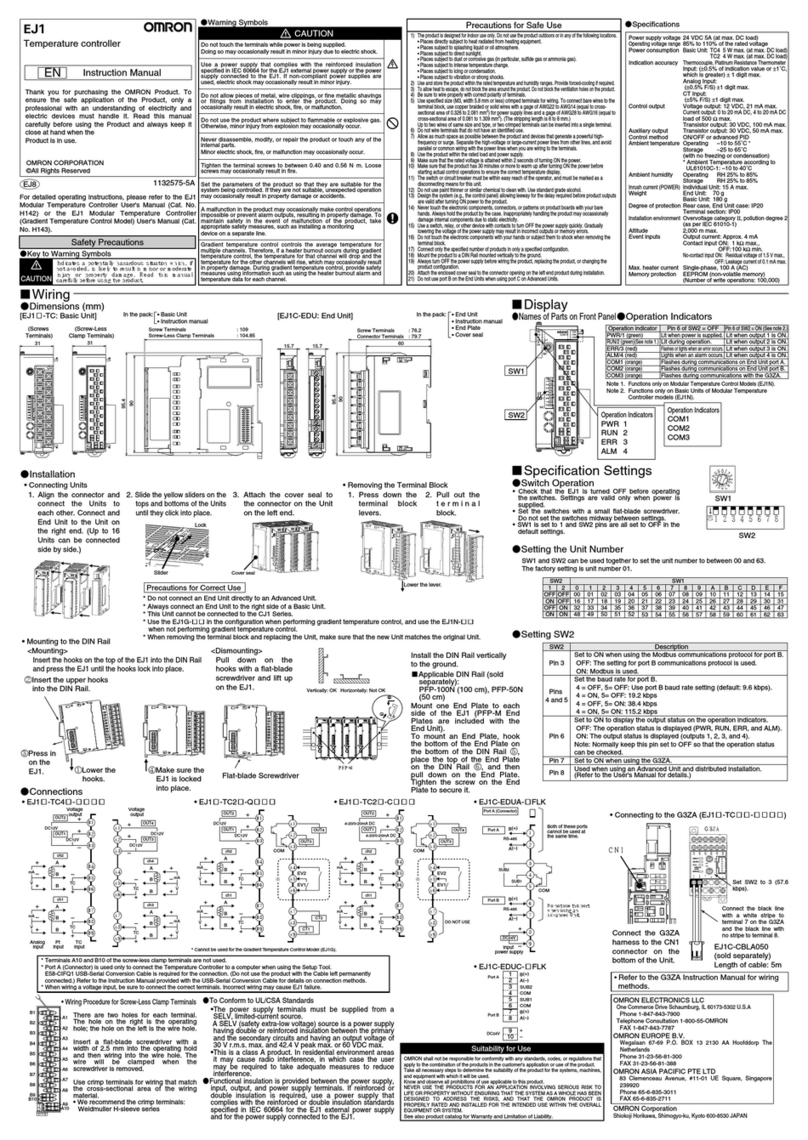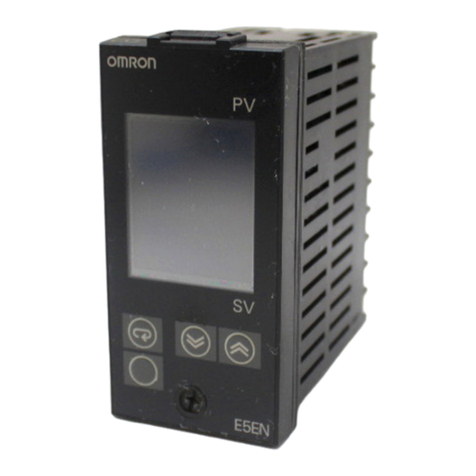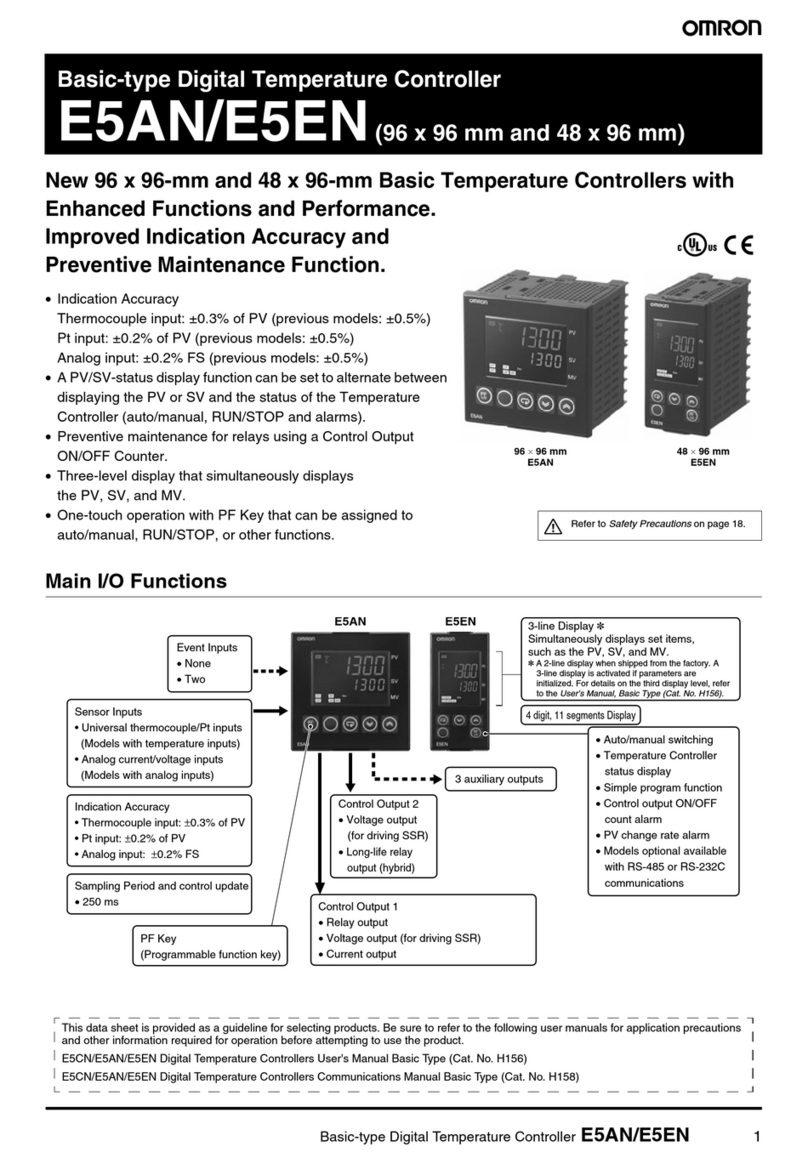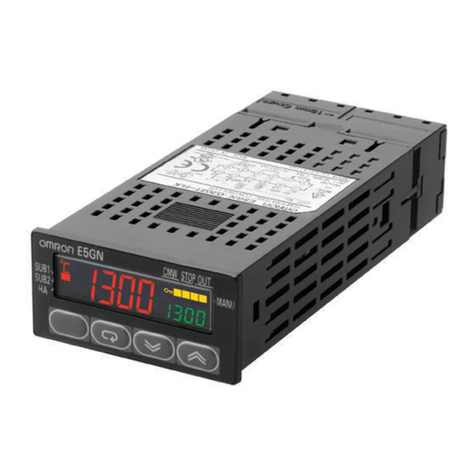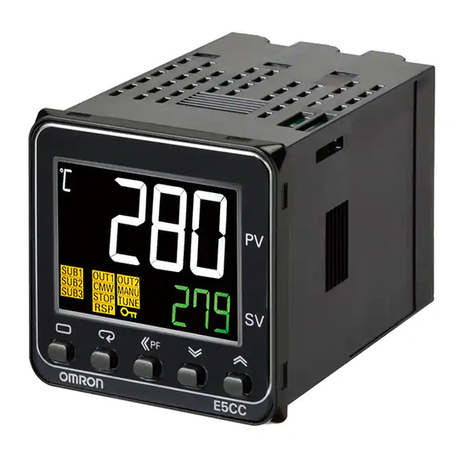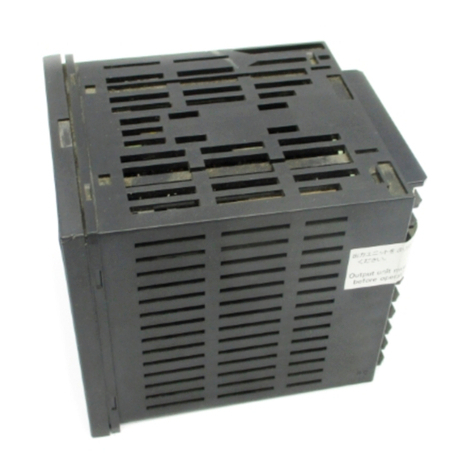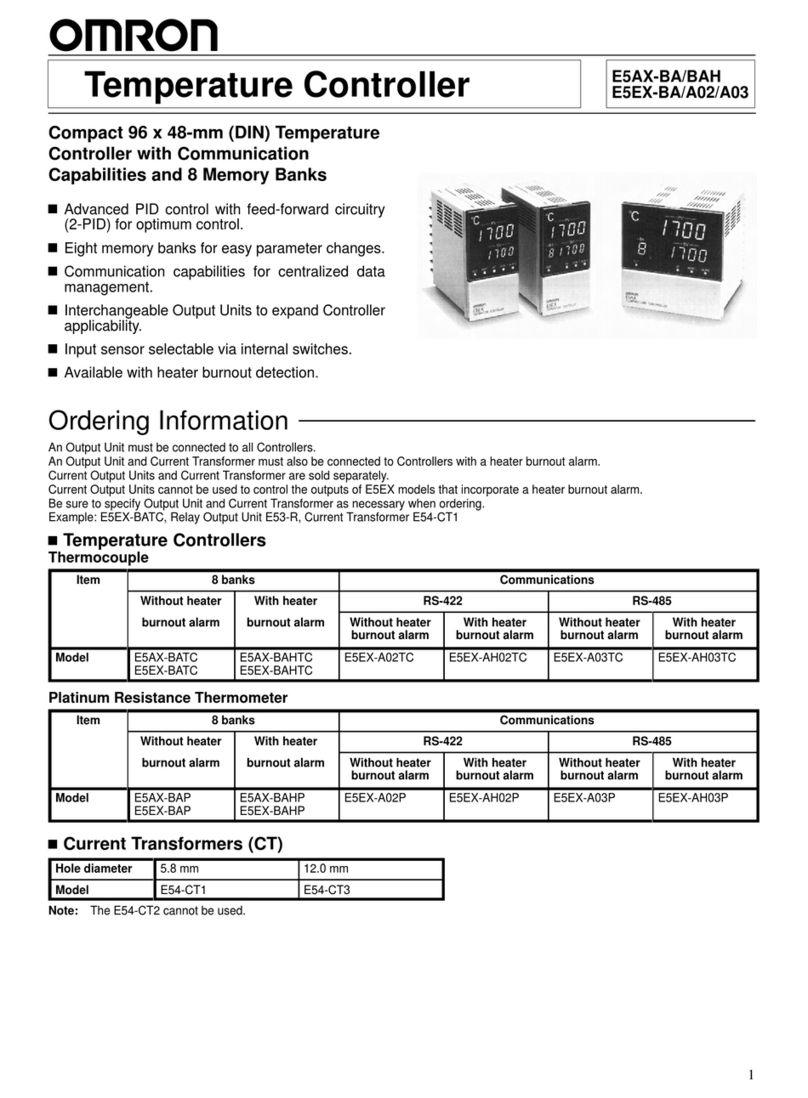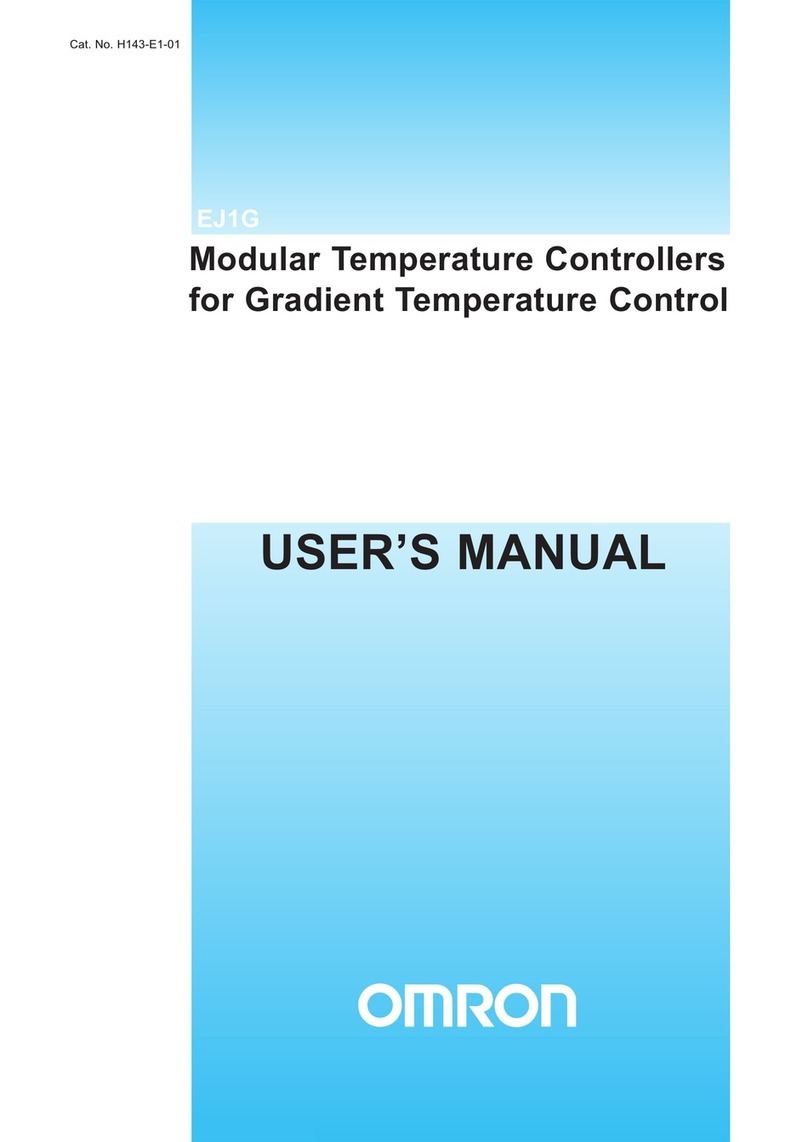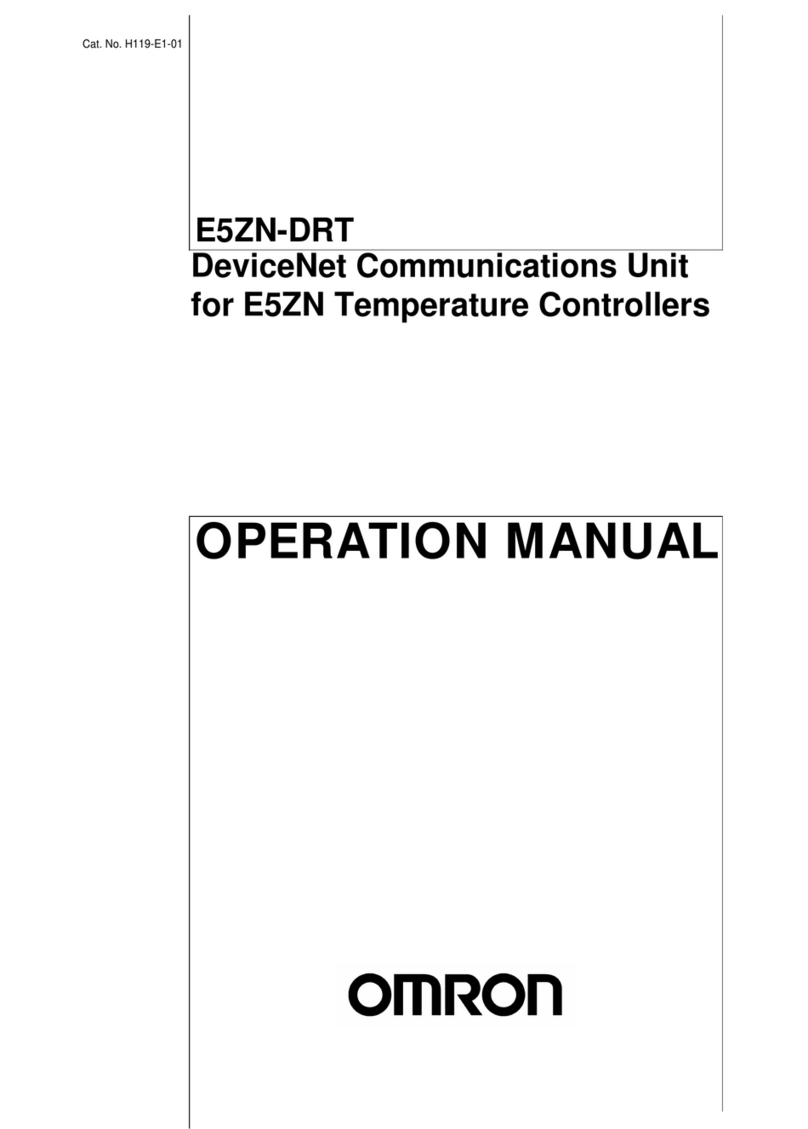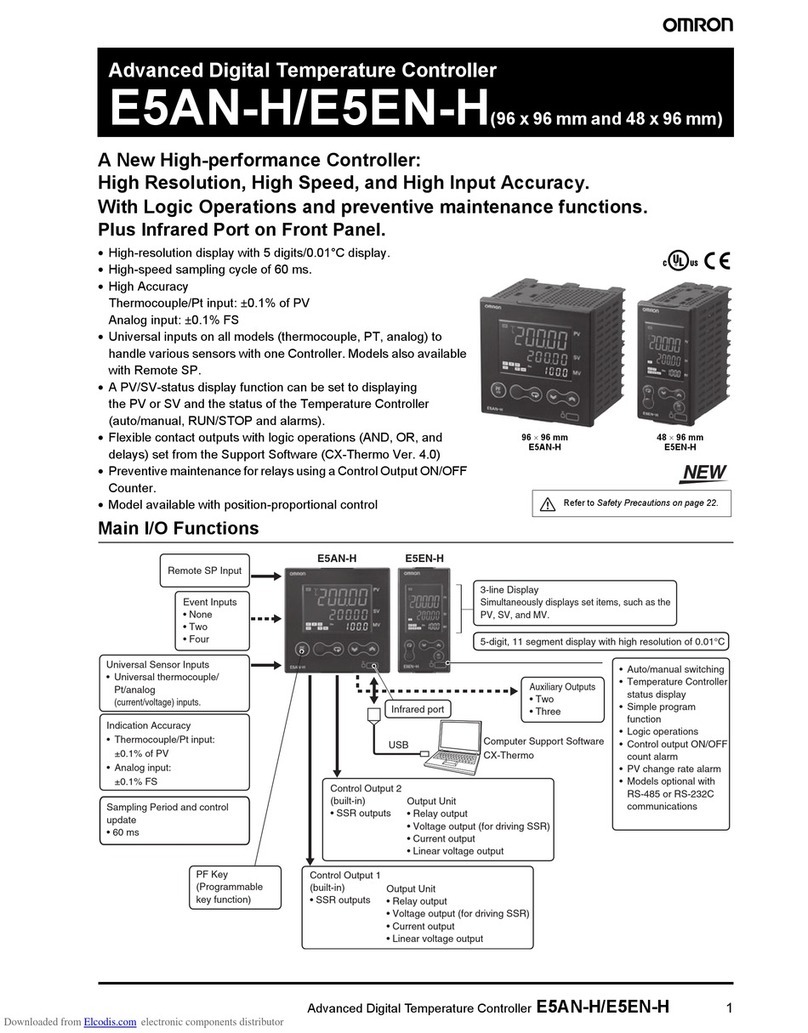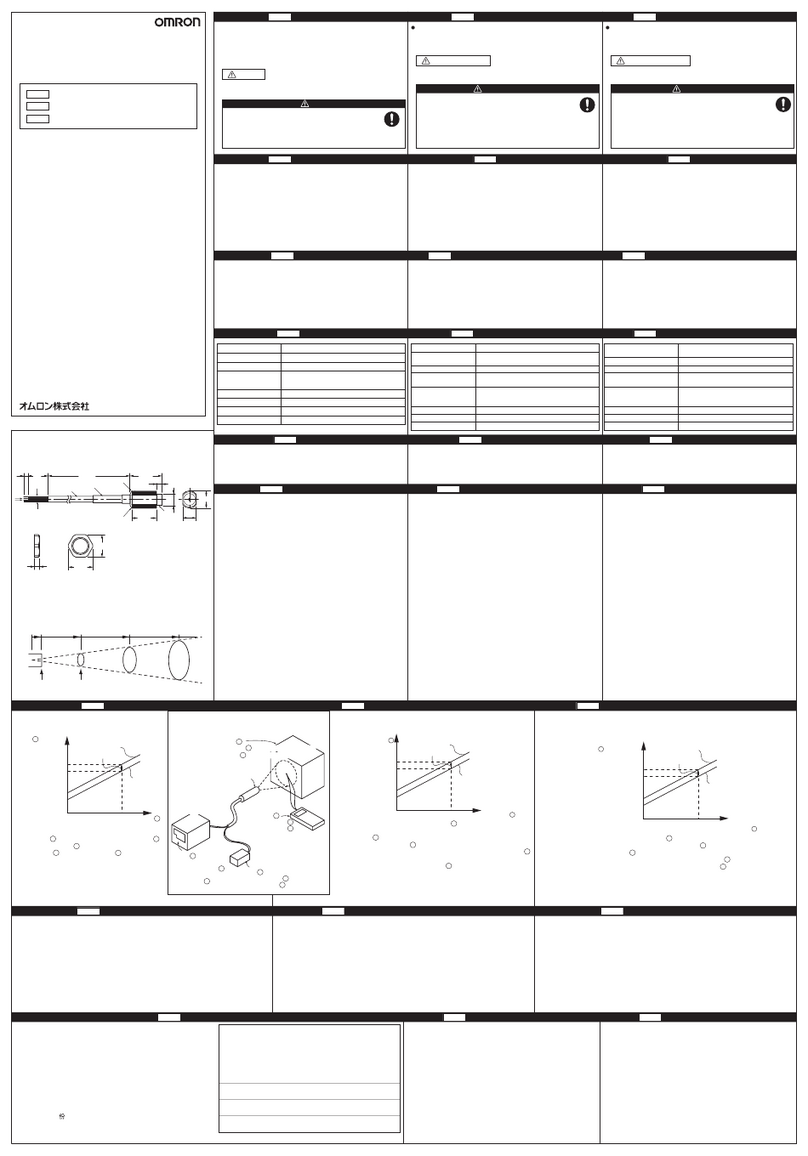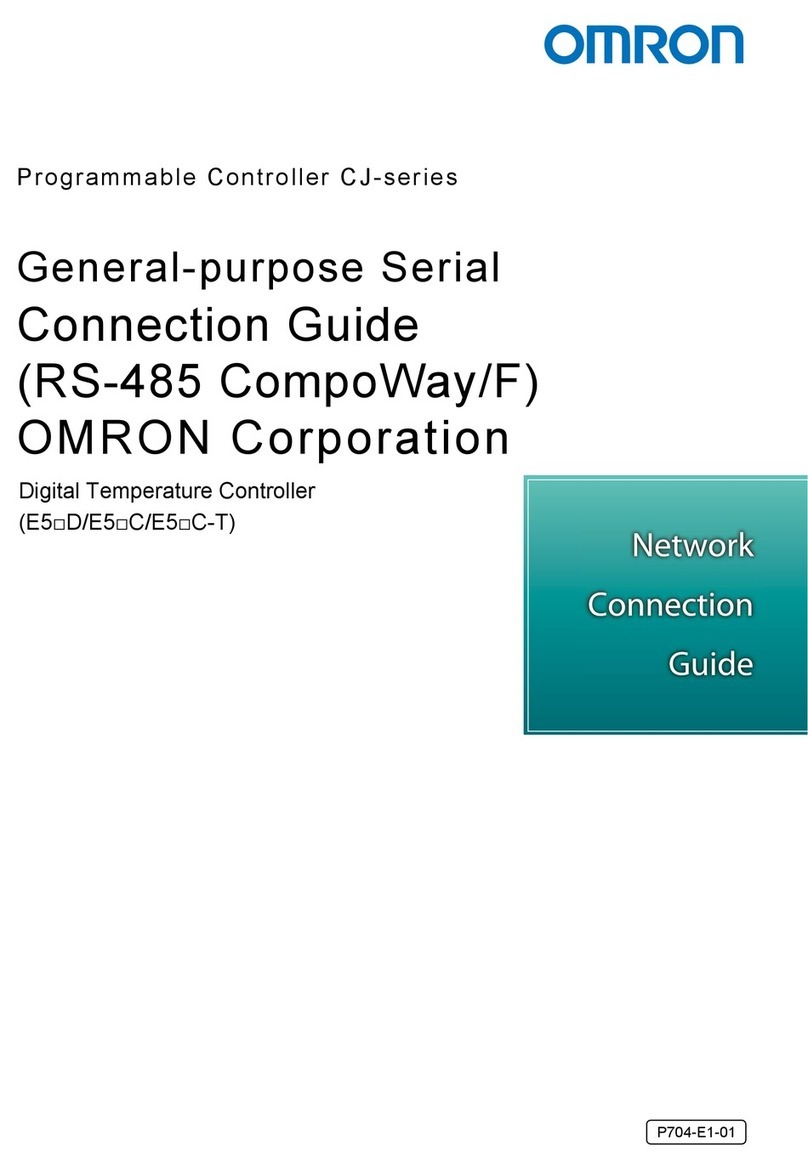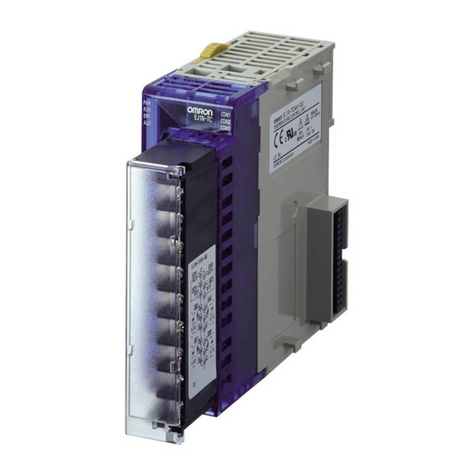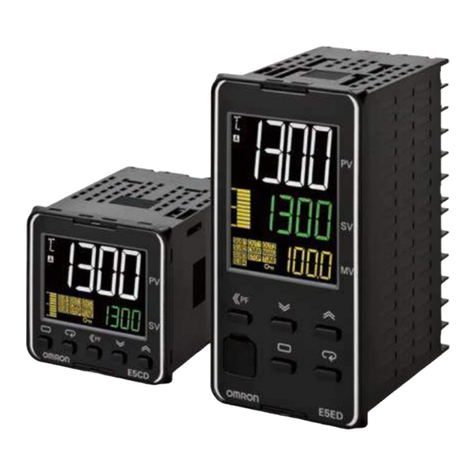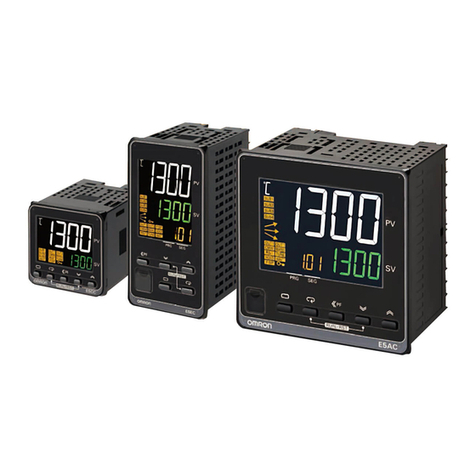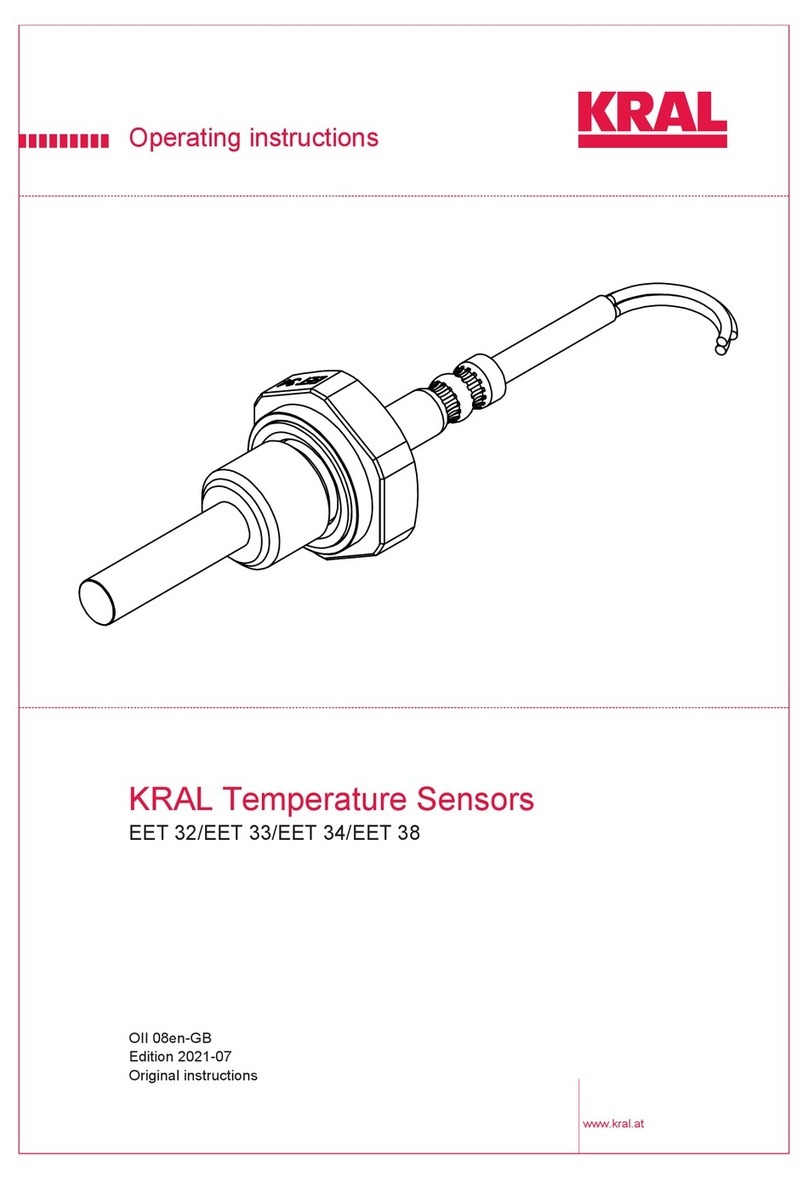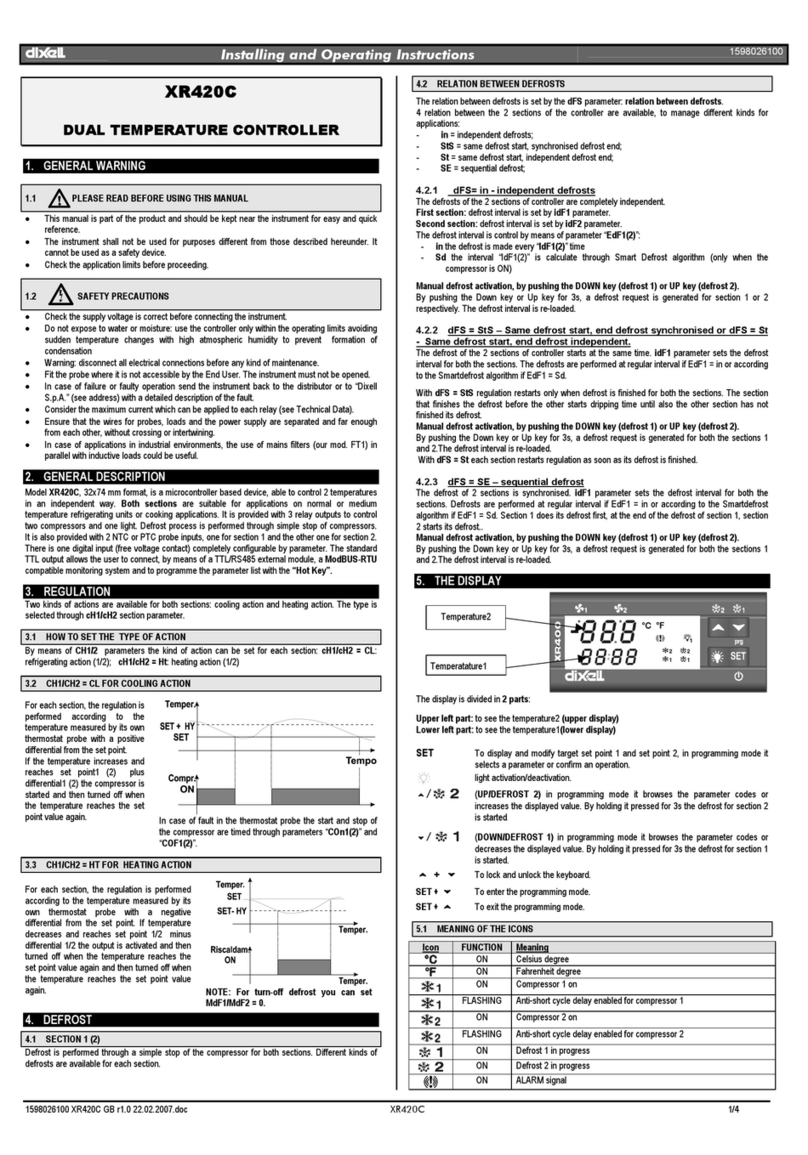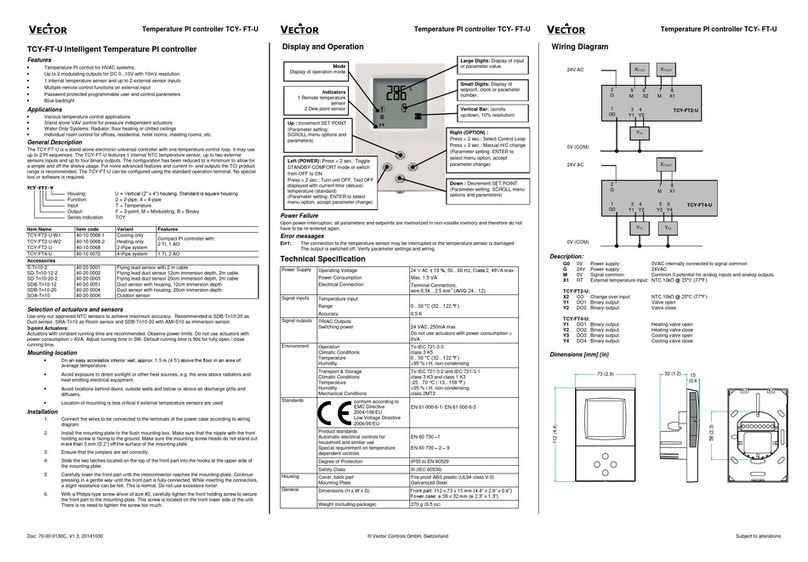Modular Temperature Controller for Gradient Temperature Control EJ1G 3
■Characteristics
Note: 1. The indication of K thermocouples in the −200 to 1,300°C range, T and N thermocouples at a temperature of −100°C or less, and U and
L thermocouples at any temperature is ±2°C ±1 digit maximum. The indication of B thermocouples at a temperature of 400°C or less is
unrestricted. The indication of R and S thermocouples at a temperature of 200°C or less is ±3°C ±1 digit max.
W = (±0.5% of indication value (PV) or ±3°C, whichever is greater) ±1 digit max. PLII = (±0.5% of indication value (PV) or ±2°C, whichever
is greater) ±1 digit max.
2. Ambient temperature: −10°C to 23°C to 55°C
Voltage range: −15% to +10% of rated voltage
3. “EU” stands for Engineering Unit. The location of the decimal point depends on the setting of decimal point position B. If the decimal point
location is set to 0 (****), however, it will be treated as if it were set to 1 (***.*).
4. B, R, and S sensors: 0.2°C/Ωmax. (100 Ωmax.)
Indication accuracy Thermocouple input/platinum resistance thermometer input:
(±0.5% of indication value (PV) or ±1°C, whichever is greater) ±1 digit max. (See note 1.)
Analog input: ±0.5% FS ±1 digit max.
CT input: ±5% FS ±1 digit max.
Temperature variation influence
(See note 2.)
Thermocouple input (R, S, B): (±1% of indication value (PV) or ±10°C, whichever is greater) ±1 digit max.
Other thermocouple input: (±1% of indication value (PV) or ±4°C, whichever is greater) ±1 digit max.
K thermocouple at −100°C max: ±10°C max.
Platinum resistance thermometer: (±1% of indication value (PV) or ±2°C, whichever is greater) ±1 digit max.
Analog input: ±1% FS ±1 digit max.
Voltage variation influence
(See note 2.)
Proportional band (P) 0.1 to 999.9 EU (in units of 0.1 EU) (See note 3.)
Integral time (I) 1 to 3,999 s (in units of 1 s)
Derivative time (D) 0.0 to 999.9 s (in units of 0.1 s)
Control period 0.5 s, 1 to 99 s (in units of 1 s)
Alarm output setting range −1,999 to 9,999 (The location of decimal point depends on the setting of decimal point position B.)
Sampling period 250 ms
Influence of signal source
resistance
Thermocouple: 0.1°C (0.2°F)/Ωmax. (100 Ωmax per line) (See note 4.)
Platinum resistance thermometer: 0.4°C (0.8°F)/Ωmax. (10 Ωmax per line)
Insulation resistance 20 MΩmin. (at 500 VDC)
Dielectric strength 600 VAC, 50/60 Hz for 1 min between current-carrying terminals of different polarity
Vibration resistance 10 to 55 Hz, 20 m/s2for 2 hours each in X, Y, and Z directions
Shock resistance 150 m/s2max., 3 times each in 6 directions
Weight 180 g
Degree of protection Rear case: IP20, Terminal section: IP00
Memory protection EEPROM (non-volatile memory) (number of writes: 100,000)
Standards Approved standards UL61010C-1, CSA C22.2 No.1010-1
Conformed
standards
EN61010-1 (IEC61010-1): Pollution level 2, overvoltage category II
EMC Directive EMI: EN61326
EMI Radiated: EN55011 Group1 class A
EMI Conducted: EN55011 Group1 class A
EMS: EN61326
ESD Immunity: EN61000-4-2
Radiated Electromagnetic Field Immunity: EN61000-4-3
Burst immunity/Noise Immunity: EN61000-4-4
Conducted Disturbance Immunity: EN61000-4-6
Surge Immunity: EN61000-4-5
Commercial Frequency Immunity: EN61000-4-8
Voltage Dip/Interrupting Immunity: EN61000-4-11



